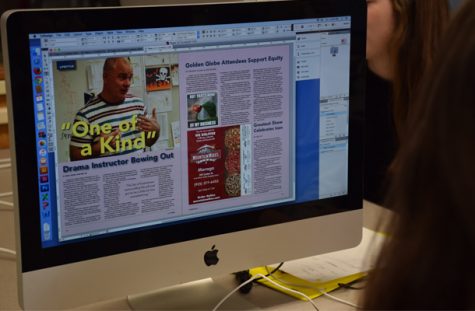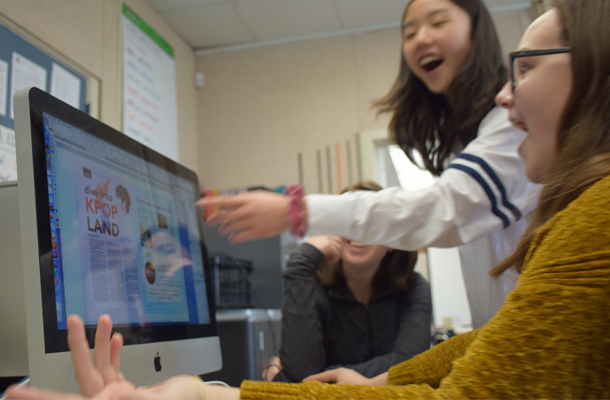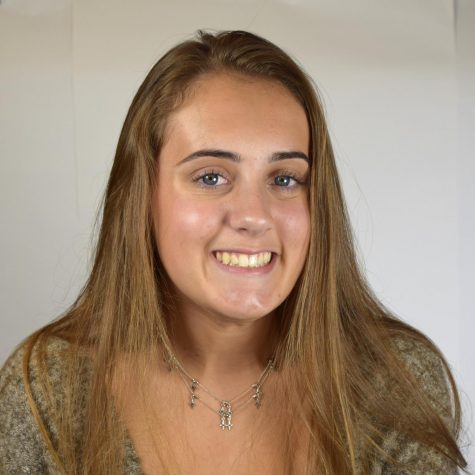VAPA Requirement Impacts Publications Enrollment
April 26, 2018
As next year’s schedules are being set, a number of students find themselves struggling to accommodate the mandatory visual/performing arts (VAPA) credit required for graduation, while traditional campus programs like yearbook and journalism are experiencing a decline in enrollment. This raises the question, why don’t these courses, which offer a heavy emphasis on visual design, count as visual arts?
Yearbook advisor Paul Verbanszky would like to see the designation for these courses changed so that students who take them receive VAPA credit. “Especially in publications in general, it’s a large amount of graphic design, layout design, Photoshop, and photography composition, and those are all prevalent in both journalism and in yearbook,” he said.
“The amount of work students put into designing a page, whether it’s in newspaper or in yearbook, and also the hours spent in editing photos and composition, is comparable to many other art classes. And many schools have it like that already, but our district doesn’t,” said Verbanszky.
Journalism advisor Chuck Woolridge, who has guided La Puma‘s staff for 6 years, also supports adding yearbook and journalism to the list of courses that qualify for visual art credit. “[Verbanszky and I] feel like both of our programs offer a curriculum that teaches important elements of design and both technical and aesthetic principles of photography, and that if regular photography and art classes fulfill the art requirements, we think that the yearbook and journalism experience should also fulfill the art requirement,” he said.
Journalism and yearbook do fulfill UC/CSU elective credit, though the district does not identify them as visual art courses.
“[There are students] who are in a position where they really want to take journalism because they’re passionate about it, but they’re being pulled away from it because it doesn’t fulfill a graduation requirement,” added Woolridge.
One such student is freshman Amanda Young, who has enjoyed her experience in journalism but finds herself unable to enroll in the elective full-time during her sophomore year due to the sophomore health course requirement and the requirement that she take a year-long VAPA elective. Instead of taking journalism 2, where she would learn advanced photography and design skills in the context of producing the school’s news magazine, she has enrolled in beginning photography.
“I don’t want to take 7 classes my senior year, and I want a spot in my schedule for PE just in case I can’t finish my sports seasons, so that was frustrating to try and figure out,” Young said. “I would much rather take journalism for a full year and not take photography because I like journalism more and I think it’d be good to take it all 4 years.” Continuing through journalism 2, 3 and 4 would also allow Young to apply for an editorial position on the La Puma staff, which might offer leadership opportunities and the development of management skills that photography and art classes may not.
Young believes the class deserves to be accredited for the work students invest. “Especially the editors, they do all the layout, and we all take pictures- half the grade on our evaluation rubrics is photos and using ‘the rules’ and stuff, so I think it would be completely fair for journalism to be an art credit and I think that it would also encourage more participation in journalism and yearbook,” she added.
Young attempted to find a loophole in the district’s current policy by exploring the possibility of taking an art course over the summer. Unfortunately, Young discovered that district policy states that all required courses must be completed on-campus.
Meanwhile, Verbanszky has taken the initiative by developing a proposal that the categorization of journalism and yearbook include VAPA credit, which he believes would consequently improve enrollment in the courses. “[Woolridge] and I are in the process of trying to do that,” said Verbanszky. “I’m not sure of all the details yet- I’m still investigating further- but it has to be proposed to the administration here at school, and we’ve already written up a rough proposal of ‘Why’, along with sample lessons and other activities, and then from there it goes to the district, and the district school board has to decide if they’re willing to switch it to an art credit.”
“The journalism program and the yearbook program are A-G elective certified, but it’s always good to get your program to fulfill as many different requirements as possible,” Woolridge added.


